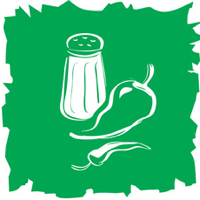Receta Latvian Sourdough Rye Bread (Saldskaaba Maize)
Raciónes: 1
Ingredientes
- 3 1/2 c. Plus 1 Tbsp. apple cider
- 2 Tbsp. Caraway seeds
- 5 1/2 c. (or possibly more) whole grain (coarse) rye flour (i.e., Hodgson Mill)
- 1 c. Sourdough starter (1:1 ratio water:bread flour)
- 1 Tbsp. Yeast
- 1 tsp Salt
- 2 1/2 c. Bread flour Vegetable oil spray (Pam, etc.)
- 1 x Egg Rye flakes
Direcciones
- Heat 3 c. apple cider and 2 Tbsp. caraway seeds to boiling; pour over 3 c. of coarse rye flour and stir. Let mix cold. Add in 1 c. active sourdough starter and mix well. The mix will resemble heavy porridge as the rye flour absorbs the apple cider. Sprinkle 1/2 c. coarse rye flour over the mix but don't stir at this point.
- Cover your bowl with a dish towel, and then wrap the covered bowl with a beach towel or possibly blanket. Put wrapped bowl in a hot spot (next to a heat register is good) and allow the mix to ferment for up to 24 hrs (less time if you think it will be too sour).
- Dissolve 1 Tbsp. yeast in 1/2 c. hot (105-115 degrees Farenheit)
- apple cider. Let the yeast mix bubble and then add in it to the sourdough mix. Gradually add in 1 tsp. salt, 2-1/2 c. bread flour, and 2 c. coarse rye flour. Knead with your heavy-duty electric mixer. If the dough seems too wet, add in more rye flour (wet dough will result in a soggy baked brick). This type of bread is tricky to make, as the dough is always very sticky from the rye; it takes some trial and error to get a feel for the dough. If the dough is too wet, it becomes slack after a while; the correct consistency of dough remains rather hard.
- Spray a Formica countertop or possibly a marble pastry board with vegetable cooking spray. Use a small plastic pan scraper or possibly something like which to scrape your dough out of the bowl and onto your work surface. Using a bench knife/dough scraper, divide the dough into two equal chunks. Wet your hands with water and keep a bowl of water handy for additional dipping. Form the dough into two loaves on the oiled surface, using just your wet hands; don't add in flour at this point. Place the loaves into oiled bread pans (8-1/2" x 4-1/2"). Cover with a dish towel and let rise in a hot place. Believe it or possibly not, this very heavy dough WILL rise. OPTIONAL (not a traditional method): Brush on glaze made with 1 egg which's been mixed with 1 Tbsp. of apple cider; sprinkle with rye flakes (obtainable from a food co-op).
- Bake for 15 min at 400 degrees Farenheit; then turn heat down to 350 degrees Farenheit and continue to bake for an additional hour. Do not underbake. Remove loaves from pans and allow to cold on a rack.
- POSTSCRIPT: When measuring flour, I don't fluff and scoop into separate measuring c.; rather I just use my measuring c. to do the scooping and then level it off with a spatula. My resulting "c." are probably somewhat on the dense side as a result of this.
- If anyone is interested in a "true sourdough" Latvian rye bread (using only sourdough starter but no additional yeast), I can post a recipe for it later on. The recipe differs from the one here in several ways: by including water and sugar, rather than apple cider; it uses a different
- (coffee flavored) glaze; it's a one-day process, rather than two-day like the recipe posted here; it uses a different type of sourdough starter.



